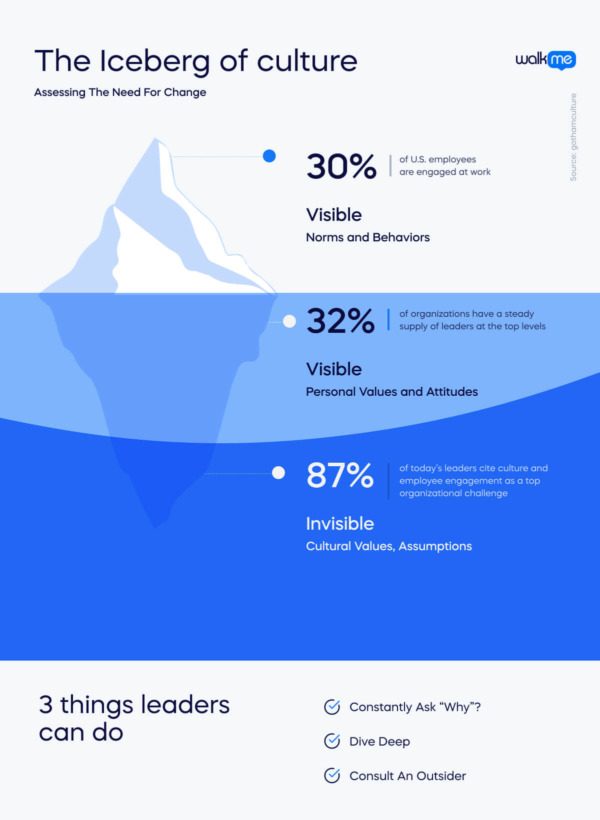Human Resources vs. Organizational Development — are these two terms for the same thing? Actually, no. Between them, these two departments handle everything from recruitment to change management.
While related, we’ll see that both of them provide different business solutions.
Human Resources vs. Organizational Development: How Different Are They?
Human Resources (HR) is the department that manages employment processes.
They handle a variety of functions related to employment, employee engagement, training, and separation.
One way of looking at it is to think of HR as the “manager” of employment processes.
This department handles:
- Hiring
- Onboarding
- Firing
- Recruitment
- Employment-related governmental compliance
Organizational Development (OD), on the other hand, fosters organizational change, growth, and development initiatives.
In terms of its organizational duties, its job is to ensure that the organization makes progress.
Since companies are dynamic and ever-changing, OD is very important. It is a permanent function in many businesses.
OD is often in charge of:
- Change management and leadership
- Professional development
- Team development
- Talent management and development
To name just a few.
OD may be included within HR or it may be a department of its own.
“Organization development” is a similar-sounding term, but it’s also a bit different. It refers to the design and changing of an organization itself. This field focuses on macro-level organization changes.
OD, however, is concerned with bottom-up development.
Like HR, it works with individual people, teams, and departments. It often implements and manages organization-wide changes that are ongoing business processes.
As we can see, HR and OD aren’t exactly the same.
The functions of the two departments are connected — and often support one another — but the duties are clearly distinct.
However, even large organizations can blur the lines between HR and OD.
Some companies assign OD duties to HR personnel. Some place the OD department within HR. And some have separate HR and OD departments.
A Match Made in Heaven? Or Somewhere Else?
Some professionals are happy to blur the lines and take on both HR and OD work. But is it the right thing to do?
Some feel that there could be risks to too much overlap. After all, the HR mindset is managerial in nature, while OD is more interested in extending boundaries.
Certain tasks are more suited to HR, such as professional development. Other tasks, such as change management tasks, fall under OD’s umbrella. While others, such as training, could be a coin toss.
Let’s look at a few OD tasks that may fall outside the scope of HR.
HR and OD: A Peek Under the Hood
Below are just a few of the business functions mentioned earlier.
By examining some of them in detail, we can get a better idea of where OD and HR differ and where they cover the same ground.
Professional Development
Professional Development is typically an HR function that supports OD. It is focused on providing individuals and teams with career development skills. This helps employees grow, but, insofar as employees continue at the company, it helps organizational growth.
It can include:
- Continuing Employee Education
- Skills Development
- Software Training
- Certifications and Career Education
These functions are often handled by HR.
But because they “develop” an organization and help employees make progress, it can be considered as OD support.
For many smaller firms, this function is included as part of HR. Larger firms may have a separate department within HR or include it as a separate department altogether.
Change Management and Leadership
Change leadership is required when businesses undergo transition, transformation, realignment, or cultural change.
Please include attribution to gothamCulture.com with this graphic.

infographic source: gothamculture
Since change management’s purpose is developing and transforming an entire organization, it is almost always directed by business leaders and change leaders.
These positions often call upon HR, OD, or both to implement change procedures.
As with every other business function mentioned here, the scale of the organization often dictates which department is responsible.
Larger companies, for instance, may have dedicated change management departments. Smaller organizations may delegate change responsibilities to other departments.
Employee Onboarding
Employee hiring, onboarding, and training are often handled by HR.
The onboarding process includes:
- Training
- Orientation
- Acclimation and Integration
Onboarding occurs when new employees are hired, transferred, or when major changes take place.
A similar term, “user onboarding,” is used for software orientation and training. This is distinct, but occurs frequently in today’s digital workplace. HR may work with IT to handle this process.
“Offboarding” is the opposite of onboarding — when an employee leaves a company, HR handles the separation process.
HR is responsible, in this case, for helping the employee share expertise as they leave the company. HR also assists with any paperwork, documentation, severance packages, and other termination procedures.
Conclusion: HR and OD, Two Peas in a Pod
After close examination, it is clear that human resources and organizational development perform different functions within an organization.
Both roles overlap and support other business processes, ranging from employment processes to change management.
Each department is critical when it comes to employee engagement, workforce development, and business development.
